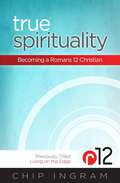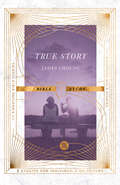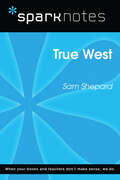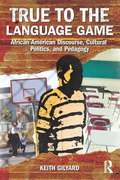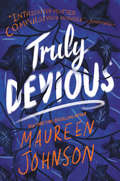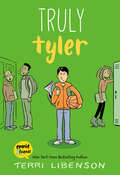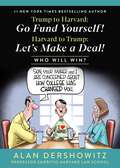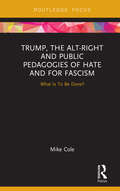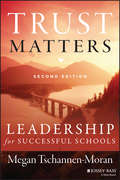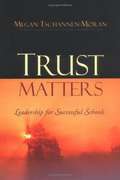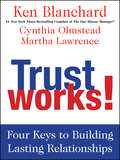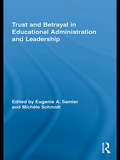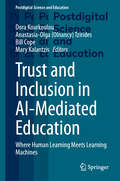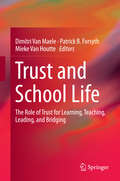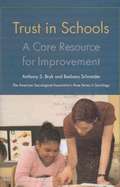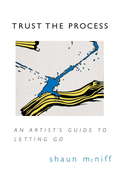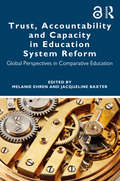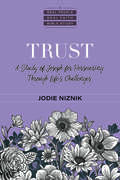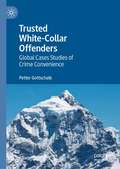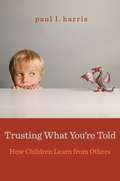- Table View
- List View
True Spirituality: Becoming a Romans 12 Christian
by Chip IngramA launching pad for your spiritual journey, this inspiring book provides clear, specific, and practical guidelines for becoming a Christian who lives like Christ.Christians today live in a world that is activity heavy and relationship light. The result is spiritual emptiness. We struggle to know what God wants from us and for us . . . and we’re unsure what a real relationship with God really looks like. But that was never God’s idea. HIS idea of faith is not about rules or religion— it’s about relationship. That’s where God tells us to start. In Romans 12, God gives us a clear picture of what Christians should look like at the root level. If you’re ready to move from “in” to “all in,” then you’re ready to become a Romans 12 Christian. The next steps of your journey toward true spirituality start here.
True Stories about Teachers: Real-life inspiration and motivation in the classroom (Cup of Comfort Stories)
by Colleen SellVirtually everyone can recall a special teacher, coach, or mentor who opened his or her eyes to a new outlook on life. Teachers guide us to read, write, imagine, explore, and understand; they teach us to count, and they teach us what counts in life. Teachers touch millions of young lives every day with their dedication, passion, and generosity. The three stories in True Stories about Teachers offer you a way to repay our devoted educators.
True Story Bible Study (IVP Signature Bible Studies)
by James ChoungIs the gospel really good news? What was the central message of Jesus, and how can Christians share it effectively with others? In these five easy-to-use studies, James Choung guides readers through key Scripture passages that informed his groundbreaking book True Story. Discover the four movements of the gospel's Big Story and what they mean for living and sharing the Christian faith. As companions to the IVP Signature Collection, IVP Signature Bible Studies help individuals and groups explore and apply biblical truths found in classic books. Each session features quotations from True Story matched with Scripture passages, reflection questions, and application ideas that will equip readers to connect the text to their own lives. A leader's guide and list of suggested resources are also included.
True West (SparkNotes Literature Guide Series)
by SparkNotesTrue West (SparkNotes Literature Guide) by Sam Shepard Making the reading experience fun! Created by Harvard students for students everywhere, SparkNotes is a new breed of study guide: smarter, better, faster. Geared to what today's students need to know, SparkNotes provides: *Chapter-by-chapter analysis *Explanations of key themes, motifs, and symbols *A review quiz and essay topicsLively and accessible, these guides are perfect for late-night studying and writing papers
True to the Language Game: African American Discourse, Cultural Politics, and Pedagogy
by Keith GilyardIn True to the Language Game, Keith Gilyard, one of the major African American figures to emerge in language and cultural studies, makes his most seminal work available in one volume. This collection of new and previously published essays contains Gilyard’s most relevant scholarly contributions to deliberations about linguistic diversity, cultural identity, critical literacy, writing instruction, literary texts, and popular culture. The volume also features contemporary treatises on such timely topics as "students’ right to their own language," code-switching pedagogy, and political discourse surrounding the rise of Barack Obama. Gilyard weaves together serious analysis, theoretical work, policy discussions, and personal reflections on the interplay of language, literacy, and social justice to make True to the Language Game essential reading for students and scholars in rhetorical studies, composition studies, applied linguistics, and education.
Truly Devious: A Mystery (Truly Devious #1)
by Maureen JohnsonNew York Times bestselling author Maureen Johnson weaves a delicate tale of murder and mystery in the first book of a striking new series, perfect for fans of Agatha Christie and E. Lockhart. <P><P>Ellingham Academy is a famous private school in Vermont for the brightest thinkers, inventors, and artists. It was founded by Albert Ellingham, an early twentieth century tycoon, who wanted to make a wonderful place full of riddles, twisting pathways, and gardens. “A place,” he said, “where learning is a game.”Shortly after the school opened, his wife and daughter were kidnapped. The only real clue was a mocking riddle listing methods of murder, signed with the frightening pseudonym “Truly, Devious.” It became one of the great unsolved crimes of American history. <P>True-crime aficionado Stevie Bell is set to begin her first year at Ellingham Academy, and she has an ambitious plan: She will solve this cold case. That is, she will solve the case when she gets a grip on her demanding new school life and her housemates: the inventor, the novelist, the actor, the artist, and the jokester. But something strange is happening. Truly Devious makes a surprise return, and death revisits Ellingham Academy. <P> The past has crawled out of its grave. Someone has gotten away with murder. The two interwoven mysteries of this first book in the Truly Devious series dovetail brilliantly, and Stevie Bell will continue her relentless quest for the murderers in books two and three.
Truly Tyler (Emmie & Friends)
by Terri LibensonA story about being your truest self—and trusting your truest friends—from bestselling author Terri Libenson. Perfect for fans of Raina Telgemeier and Shannon Hale.Cliques. Crushes. Comics. Middle school!Emmie is psyched that she gets to work on a comics project with her crush, Tyler. But she gets the feeling that his friends don’t think she’s cool enough. Maybe it’s time for a total reinvention. . . .Ever since Tyler started getting into art and hanging out with Emmie, his friends have been giving him a hard time. Why can't he be an artist and play basketball?Don’t miss the rest of the Emmie & Friends series: Invisible Emmie, Positively Izzy, Just Jaime, Becoming Brianna, Remarkably Ruby, and You-Niquely You: An Emmie & Friends Interactive Journal!
Trump to Harvard: Harvard to Trump: Let's Make a Deal!
by Alan DershowitzPresident Donald Trump has declared war against elite American universities, such as Harvard, and has threatened to cut off federal funding, end tax exemptions, and limit foreign student visas. Harvard has filed lawsuits and threatened additional legal action. The nation is deeply divided over this conflict. How should Americans who care deeply about universities, about antisemitism, and about the proper role of government respond to this dangerous rift? Alan Dershowitz poses four basic questions about the decision whether to defund or otherwise punish universities that discriminate against—or apply a double standard to—Jews as victims of discrimination.Is it ever permissible, as a matter of policy and academic freedom, to weaponize governmental funding of universities in an effort to influence their policies?Is it constitutional or otherwise legal to cut off governmental funding based on the content of university speech or policies?Is the Trump administration justified in defunding universities such as Harvard and Columbia for their failures to deal effectively with growing antisemitism on their campuses?Can the government deny student (or faculty) visas to individuals who advocate or promote antisemitism or other actions that violate American policies?Among the reforms Dershowitz advocates are a return to meritocratic admissions and hiring; a return to rigorous blind grading; the end of the non-meritocratic diversity, equity, and inclusion bureaucracies; the application of a single standard of free speech, academic freedom, and discipline; and the end of ethnic, gender, regional, religious, sexual preference, and other identity-based departments, studies, programs, and other advocacy centers that have become incubators for anti-Jewish bigotry.
Trump, the Alt-Right and Public Pedagogies of Hate and for Fascism: What is to be Done?
by Mike ColeTrump, the Alt-Right and Public Pedagogies of Hate and for Fascism: What Is To Be Done? uses public pedagogy as a theoretical lens through which to view discourses of hate and for fascism in the era of Trump and to promote an anti-fascist and pro-socialist public pedagogy. It makes the case for re-igniting a rhetoric that goes beyond the undermining of neoliberal capitalism and the promotion of social justice, and re-aligns the left against fascism and for a socialism of the twenty-first century. Beginning with an examination of the history of traditional fascism in the twentieth century, the book looks at the similarities and differences between the Trump regime and traditional Western post-war fascism. Cole goes on to consider the alt-right movement, the reasons for its rise, and the significance of the internet being harnessed as a tool with which to promote a fascistic public pedagogy. Finally, the book examines the resistance against these discourses and addresses the question of: what is to be done? This topical book will be of great interest to scholars, to postgraduate students and to researchers, as well as to advanced undergraduate students in the fields of education studies, pedagogy, and sociology, as well as readers in general who are are interested in the phenomenon of Trumpism.
Trumpocalypse: The End-Times President, a Battle Against the Globalist Elite, and the Countdown to Armageddon
by Troy Anderson Paul McGuireFrom the authors of the international bestseller The Babylon Code comes an explosive exposé of the chilling truth about the fierce opposition to the Trump presidency, and why the globalist elite and Deep State will stop at nothing-assassination, military coup, staged economic collapse, or worse-to overthrow him."Trumpocalypse!" It's the media-coined meme inciting panic and fear that America has elected an unstable man who will barge into delicate international affairs like a bull in a china shop and incite nations bent on America's destruction to trigger World War III-an unprecedented nuclear apocalypse ending the world as we know it. But is the media telling us the truth?No, say internationally-recognized prophecy expert and Fox News and History Channel commentator Paul McGuire and Pulitzer Prize-nominated investigative journalist Troy Anderson. America's most insidious enemies are not hostile nations; they are elite globalists-the "Establishment" that is making the "1 percent" even richer while working- and middle-class people watch their incomes and net worth's flatline or plummet.The authors fearlessly expose the globalist elite's secret plan for humanity and campaign of mass deception. Using documentation gleaned from years of journalistic investigation and extensive interviews with over fifty of the world's most respected geopolitical, economic and military affairs experts, faith leaders, and biblical scholars, McGuire and Anderson unmask these elites as members of secret societies with deep occult connections who have gained control of America's dominant institutions-government, education, entertainment, international banking, and even the media.Trumpocalypse explores the enigmatic prophecies and "biblical codes" involving Trump, and asks whether God raised up President Trump as a fearless leader to guide America and the free world through a series of major crises as the biblical end-time narrative unfolds, as many people with prophetic gifts are predicting, and shows why everyday Americans and evangelicals have rallied around Trump as their last hope of saving America and averting the horrors of the Apocalypse. It further reveals why Trump and millions of "deplorables" are fighting to stop the hidden agenda of the Establishment, and how the perplexing chaos enveloping the planet could paradoxically signal the beginning of the great end-times awakening that millions are praying for.Here is an invitation to join the anti-Establishment surge-what evangelist Franklin Graham calls "the Christian revolution"-and discover how to fulfill your own destiny in the run-up to the Second Coming of Jesus Christ.
Trust Matters
by Megan Tschannen-MoranMake your school soar by escalating trust between teachers, students, and familiesTrust is an essential element in all healthy relationships, and the relationships that exist in your school are no different. How can your school leaders or teachers cultivate trust? How can your institution maintain trust once it is established? These are the questions addressed and answered in Trust Matters: Leadership for Successful Schools, 2nd Edition. The book delves into the helpful research that has been conducted on the topic of trust in school. Although rich with research data, Trust Matters also contains practical advice and strategies ready to be implemented. This second edition expands upon the role of trust between teachers and students, teachers and administrators, and schools and families.Trust Matters: Leadership for Successful Schools also covers a range of sub-topics relevant to trust in school. All chapters in the text have questions for reflection and discussion. Engaging chapters such as "Teachers Trust One Another" and "Fostering Trust with Students" have thought-provoking trust-building questions and activities you can use in the classroom or in faculty meetings. This valuable resource:Examines ways to cultivate trustShares techniques and practices that help maintain trustAdvises leaders of ways to include families in the school's circle of trustAddresses the by-products of betrayed trust and how to restore itWith suspicion being the new norm within schools today, Trust Matters is the book your school needs to help it rise above. It shows just how much trust matters in all school relationships--administrator to teacher; teacher to student; school to family--and in all successful institutions.
Trust Matters: Leadership for Successful Schools
by Megan Tschannen-MoranTrust Matters offers educators a practical, hands-on guide for establishing and maintaining trust within their schools as well as providing information on how to repair trust that has been damaged. Written by Megan Tschannen-Moranan expert on the topic of trust and schools, Trust Matters is based in solid research. It outlines the five key elements on which individuals base their trust judgments (benevolence, honesty, openness, reliability, and competency) and explores the factors that influence the development of trust. The book explores the leader's role in fostering high quality relationships among teachers, students, and parents and examines examples of positive outcomes of trusting school environments.
Trust Works: Four Keys to Building Lasting Relationships
by Ken BlanchardBestselling author Ken Blanchard brings you the tie-in guide to accompany his TrustWorks! training program. Ken Blanchard is famous for his ability to make the seemingly complex simple. In Trust Works! he brings his talent to bear on the complicated and timely issue of trust. The book begins with an allegory - in this case, it's the story of a dog and a cat with major trust issues. Their fighting, backbiting, and sabotaging soon affects the whole household - including the humans. It quickly becomes clear that unless the ongoing conflicts can be resolved, all of the pets will be without a home. Through the counsel of a wise old parrot, the animals learn the ABCDs of trust, becoming aware of the unconscious behaviours that had been eroding their relationships and begin to change their actions. In the end, the results have a positive effect that reaches far beyond the dog and cats' relationship. Applying lessons presented in the fable to real life situations, Blanchard explores his ABCD trust model to address issues like poor morale, miscommunication in relationships, poor customer service issues, and dysfunctional leadership. Trust is an evergreen topic but is particularly relevant today, as protests in cities throughout the world underscore a growing distrust of corporations and institutions. Now more than ever, people need trust-building skills and a common language for learning the behaviours that build - or erode - trust. TRUST WORKS! is the first book to create a common, easy-to-learn language for talking about trust in a way that can bring peace and co-operation where once there was dissension.
Trust and Betrayal in Educational Administration and Leadership (Routledge Research in Education)
by Eugenie A. SamierThis collection explores critical and foundational theory for trust in educational administration and leadership as it influences a broad range of topics, such as ethics, governance, diversity, policy, management, and power. It demonstrates the relevance of this foundation to practical issues and problems internationally, both within the organizational context and extra-organizationally. Contributors from throughout the world focus on the application of trust factors as they affect our understanding of, and practice in, educational organizations. This volume will be of interest to students and faculty of educational administration theory, the policy and politics of education, and educational leadership as well as practitioners and policy makers.
Trust and Inclusion in AI-Mediated Education: Where Human Learning Meets Learning Machines (Postdigital Science and Education)
by Bill Cope Mary Kalantzis Dora Kourkoulou Anastasia-Olga Olnancy TziridesTrust and Inclusion in AI-Mediated Education: Where Human Learning Meets Learning Machines is a resource for researchers and practitioners in a field where the mainstreaming of AI technologies, and their increased capacities for deception, have produced confusion and fear. Identifying theoretical frameworks and practices in teaching with and training trustworthy and inclusive AI technology sheds light on the new challenges and opportunities for learning machines and their intersections with human learning. The book looks into the history of developing AI technology and algorithms. It offers theoretical models for best practices, interpretation, and evaluation, taking into account especially the needs of contemporary learners and their advanced literacies in cyber-social environments. The book presents in-depth analyses of recent and ongoing applications of state-of-the-art AI technologies in learning environments and classrooms assessments, ending with an interview with George Ritzer on McDonaldization and Artificial Intelligence.
Trust and School Life
by Dimitri Van Maele Patrick B. Forsyth Mieke Van HoutteThis book samples recent and emerging trust research in education including an array of conceptual approaches, measurement innovations, and explored determinants and outcomes of trust. The collection of pathways explores the phenomenon of trust and establishes the significance of trust relationships in school life. It emboldens the claim that trust merits continued attention of both scholars and practitioners because of the role it plays in the production of equity and excellence. Divided into four parts, the book explores trust under the rubrics of learning, teaching, leading and bridging. The book proposes a variety of directions for future research. These include the simultaneous investigation of trust from the prospectives of various trusters, and at both the individual and group levels, longitudinal research designs, and an elaboration of methods.
Trust in Atonement: God, Creation, and Reconciliation
by Teresa MorganA fresh exploration of atonement, rooted in the theology of trust Atonement—the restoration of right relationship with God, which God has made possible for humanity through Christ—is the good news of Christianity. How ought Christians think about the epicenter of salvation history? Teresa Morgan takes up this longstanding question and—in a significant departure from both classical and modern theologians—proposes new answers that are rooted in the concept of trust (pistis). Weaving together exegesis and theology, sociology and psychology, Morgan defines atonement as the restoration of trust between God and humanity through the trust and trustworthiness of Jesus Christ. Her model has important implications for Christians&’ understanding of sin, suffering, and the possibility of forgiveness and restoration of trust among human beings.
Trust in Schools: A Core Resource for Improvement
by Barbara Schneider Anthony BrykMost Americans agree on the necessity of education reform, but there is little consensus about how this goal might be achieved. The rhetoric of standards and vouchers has occupied center stage, polarizing public opinion and affording little room for reflection on the intangible conditions that make for good schools. Trust in Schools engages this debate with a compelling examination of the importance of social relationships in the successful implementation of school reform. Over the course of three years, Bryk and Schneider, together with a diverse team of other researchers and school practitioners, studied reform in twelve Chicago elementary schools. Each school was undergoing extensive reorganization in response to the Chicago School Reform Act of 1988, which called for greater involvement of parents and local community leaders in their neighborhood schools. Drawing on years longitudinal survey and achievement data, as well as in-depth interviews with principals, teachers, parents, and local community leaders, the authors develop a thorough account of how effective social relationships—which they term relational trust—can serve as a prime resource for school improvement. Using case studies of the network of relationships that make up the school community, Bryk and Schneider examine how the myriad social exchanges that make up daily life in a school community generate, or fail to generate, a successful educational environment. The personal dynamics among teachers, students, and their parents, for example, influence whether students regularly attend school and sustain their efforts in the difficult task of learning. In schools characterized by high relational trust, educators were more likely to experiment with new practices and work together with parents to advance improvements. As a result, these schools were also more likely to demonstrate marked gains in student learning. In contrast, schools with weak trust relations saw virtually no improvement in their reading or mathematics scores. Trust in Schools demonstrates convincingly that the quality of social relationships operating in and around schools is central to their functioning, and strongly predicts positive student outcomes. This book offer insights into how trust can be built and sustained in school communities, and identifies some features of public school systems that can impede such development. Bryk and Schneider show how a broad base of trust across a school community can provide a critical resource as education professional and parents embark on major school reforms. A Volume in the American Sociological Association's Rose Series in Sociology
Trust the Process
by Shaun McniffWhether in painting, poetry, performance, music, dance, or life, there is an intelligence working in every situation. This force is the primary carrier of creation. If we trust it and follow its natural movement, it will astound us with its ability to find a way through problems--and even make creative use of our mistakes and failures. There is a magic to this process that cannot be controlled by the ego. Somehow it always finds the way to the place where you need to be, and a destination you never could have known in advance. When everything seems as if it is hopeless and going nowhere . . . trust the process. Shaun McNiff is internationally recognized as a founder and leading figure in the arts and healing field. University Professor at Lesley University in Cambridge, Massachusetts, he is past president of the American Art Therapy Association and the author of several other books including Art As Medicine, Trust the Process, and Creating with Others .
Trust, Accountability and Capacity in Education System Reform: Global Perspectives in Comparative Education
by Jacqueline Baxter Melanie EhrenThis global collection brings a new perspective to the field of comparative education by presenting trust, capacity and accountability as the three building blocks of education systems and education system reform. In exploring how these three factors relate to student learning outcomes across different international contexts, this book provides a powerful framework for a more equal system. Drawing upon research and case studies from scholars, policymakers and experts from international agencies across five continents, this book shows how trust, capacity and accountability interact in ways and with consequences that vary among countries, pointing readers towards understanding potential leverage points for system change. Trust, Accountability, and Capacity in Education System Reform illuminates how these three concepts are embedded in an institutional context temporally, socially and institutionally and offers an analysis that will be of use to researchers, policymakers and agencies working in comparative education and towards education system reform.
Trust: A Study of Joseph for Persevering Through Life's Challenges (A Real People, Real Faith Bible Study)
by Jodie Niznik"Jodie's insightful and practical application of Scripture keeps her studies at the top of my list."--Kat Armstrong, author of The In-Between PlaceJoseph's life looked charmed from the beginning. He was the favorite son of the favorite wife of Jacob, a wealthy patriarch. And Joseph was given a prophetic dream from God about his family's future. There was no reason to expect anything going wrong--and isn't it simple to have faith when all is well? But one gift too many, and his ten jealous older brothers had had enough. They sold him into slavery--and kicked off years of Joseph's world spinning out of control. Yet, in both dire circumstances and honored positions, he chose to trust God. In the end, God used Joseph to save the very family who betrayed him, and ultimately preserve the lineage of Jesus. Joseph's life's purpose was bigger than he ever anticipated. In times of uncertainty, questioning where God is and what he's up to feels reasonable. But through this 8-week study of one remarkable man, Jodie Niznik reveals that God is always in control and worthy of our trust, no matter what. She delves into Scripture for new ideas on how readers can intentionally engage with God, offering a tool kit of spiritual practices and valuable observations of the triumphs and failures of this real man and his real faith.
Trusted White-Collar Offenders: Global Cases Studies of Crime Convenience
by Petter GottschalkThis book uses global case studies of white-collar crime to examine offenders in top business positions and their motives. Drawing on the theory of convenience, this book opens up new perspectives of white-collar offenders in terms of their financial motives, their professional opportunities, and their personal willingness for deviant behaviour. It focusses on three groups of privileged individuals who have abused their positions for economic gain: people who occupied the position of chair of the board, people who were chief executive officers, and female offenders in top positions, and the related white-collar crimes. Convenience themes are identified in each case using the structural model for convenience theory. The case studies are from Denmark, Germany, Japan, Moldova, Norway, Sweden, and the United States. This book speaks to those interested in white-collar crime, criminal justice, policing, organizational behaviour and business administration.
Trusteeship
by M. K. GandhiExpanded it means : “Earn your crores by all means. But understand that your wealth is not yours; it belongs to the people. Take what you require for your legitimate needs, and use the remainder for society.” This truth has hitherto not been acted upon; but, if the moneyed classes do not even act on it in these times of stress, they will remain the slaves of their riches and passions and consequently of those who overpower them.
Trusting What You're Told: How Children Learn from Others
by Paul L. HarrisIf children were little scientists who learn best through firsthand observations and mini-experiments, as conventional wisdom holds, how would a child discover that the earth is round-never mind conceive of heaven as a place someone might go after death? Overturning both cognitive and commonplace theories about how children learn, Trusting What You’re Told begins by reminding us of a basic truth: Most of what we know we learned from others. Children recognize early on that other people are an excellent source of information. And so they ask questions. But youngsters are also remarkably discriminating as they weigh the responses they elicit. And how much they trust what they are told has a lot to do with their assessment of its source. Trusting What You’re Told opens a window into the moral reasoning of elementary school vegetarians, the preschooler’s ability to distinguish historical narrative from fiction, and the six-year-old’s nuanced stance toward magic: skeptical, while still open to miracles. Paul Harris shares striking cross-cultural findings, too, such as that children in religious communities in rural Central America resemble Bostonian children in being more confident about the existence of germs and oxygen than they are about souls and God. We are biologically designed to learn from one another, Harris demonstrates, and this greediness for explanation marks a key difference between human beings and our primate cousins. Even Kanzi, a genius among bonobos, never uses his keyboard to ask for information: he only asks for treats.
